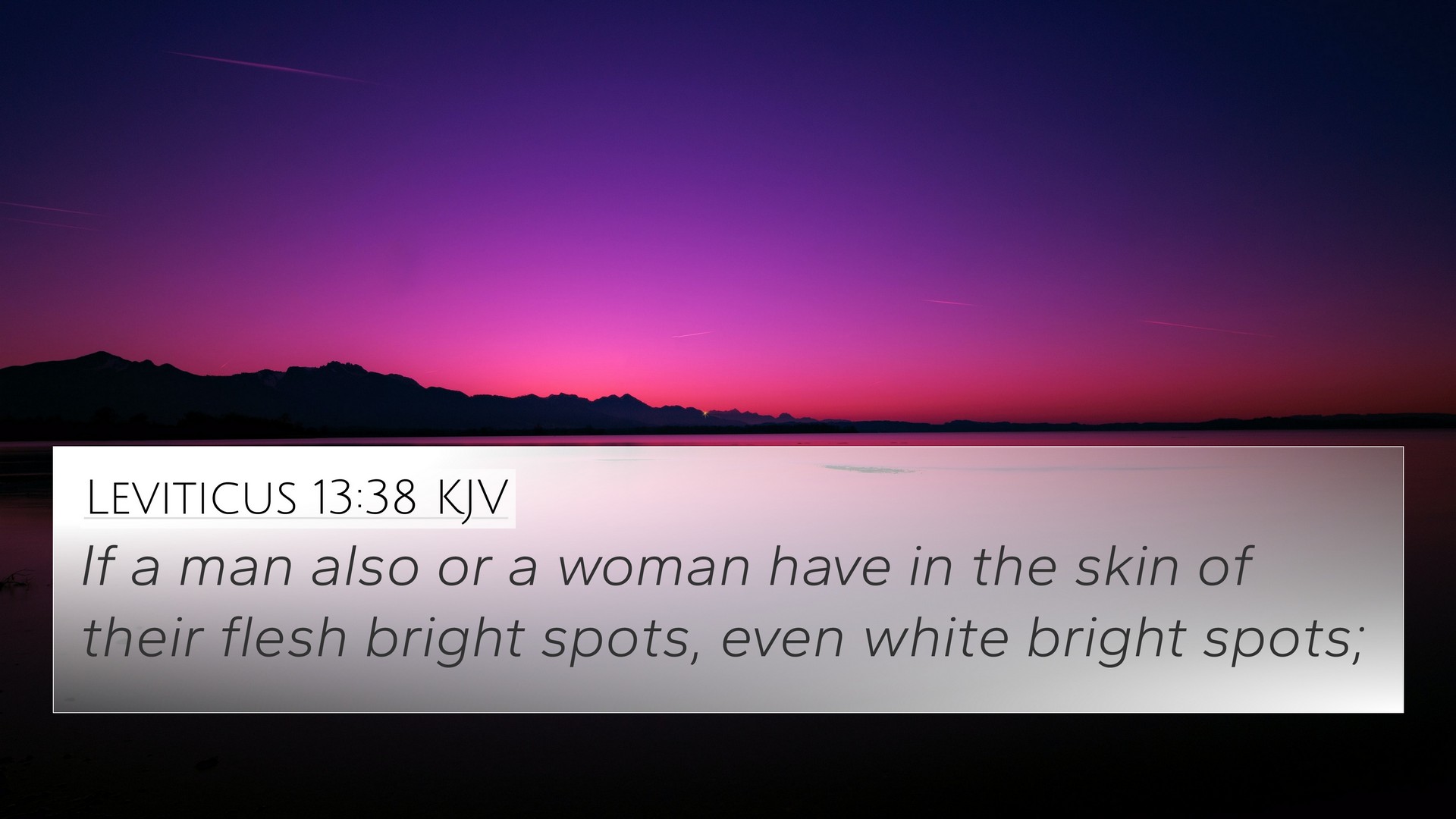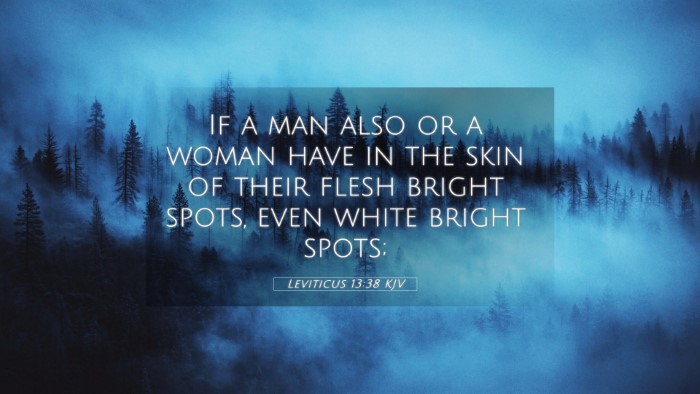Understanding Leviticus 13:38
Leviticus 13:38 states: "If a man also or a woman have in the skin of their flesh bright spots, even white bright spots;". This verse is part of the larger context in Leviticus which deals with various laws regarding ceremonial cleanliness, particularly regarding skin diseases. This particular verse lays a foundation for identifying conditions that may not necessarily be leprous but still require examination and possible isolation.
Summary of Key Concepts
- Identification of Skin Conditions: This passage underscores the importance of recognizing different skin ailments, stressing the need for discernment in interpreting the signs of health and sickness.
- Ceremonial Purity: The focus on ritual purity highlights God's desire for His people to maintain a state of holiness, extending to even their physical health.
- Community Responsibility: It reflects the communal aspect of health, where one person's condition could lead to the broader community being affected.
Commentary Insights
Matthew Henry: He emphasizes the visible nature of the spots as a sign of something deeper. Henry annotates that the bright spots indicate a need for self-examination. It serves as a metaphor for spiritual discernment; just as one must inspect physical spots, one should reflect on spiritual blemishes.
Albert Barnes: Barnes notes that the law points out various conditions that are not directly leprous but are treated with attention to prevent the spread of uncleanness. He also links this to the broader theme of God's care for His people, encouraging community vigilance.
Adam Clarke: Clarke delves into the distinction between the appearance of the spots and the characteristics of leprosy. He posits that the differentiation made in this verse must be understood in the context of health measures instituted by God for protection against disease, both physical and spiritual.
Bible Cross-References
This verse connects with several other scriptures that explore similar themes of cleanliness, health, and God's laws:
- Leviticus 14:1-32 - Details the cleansing of lepers, expanding on God's prescriptions for handling skin disease.
- Numbers 12:10 - Describes Miriam's leprosy, emphasizing social implications of physical ailments.
- Deuteronomy 24:8 - Concerns regulations regarding leprosy and the priests.
- Psalm 38:3 - Relates to the body's physical state as a reflection of spiritual health.
- Matthew 8:2-3 - Jesus healing a leper, showcasing God's compassion and the fulfillment of law through grace.
- 1 Peter 2:24 - Links physical healing with spiritual freedom, highlighting Jesus’ redemptive work.
- Mark 1:40-45 - Another account of Jesus healing a man with leprosy, emphasizing the authority of Christ over sickness.
Thematic Connections
In examining Leviticus 13:38, we see not only the application of the Law but also the anticipation of Christ’s ministry. The connection between skin disease and sin is drawn, illustrating how physical blemishes can symbolize spiritual crises.
The structured laws surrounding health and disease serve a dual purpose: ensuring physical well-being and prompting deeper introspections among the people of Israel regarding their walk with God.
Conclusion
Studying Leviticus 13:38 invites us to reflect on broader themes of purity, community health, and the nature of sin in our lives. By employing cross-referencing techniques with tools like a Bible concordance or a cross-reference Bible study guide, scholars and lay readers alike can reveal deeper insights into scripture connections.
Through understanding biblical cross-references, we identify links across the Old and New Testaments, revealing how the laws given serve as a type foreshadowing Christ and the ultimate cleansing found in Him.


